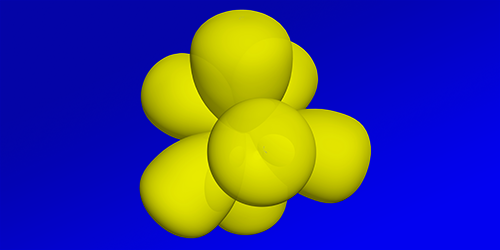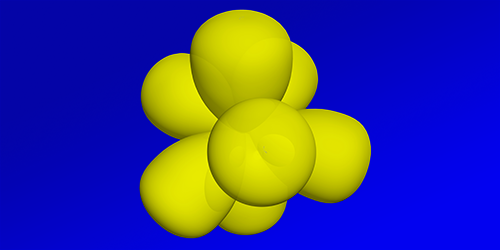A Few Qubits Go a Long Way
Few-qubit quantum computers that can surpass classical computers are about to reach the laboratory, and researchers are itching to apply them to real-world problems. One of the first areas these devices promise to impact is simulating chemical systems, whose quantum nature makes them difficult to model using classical computers. In anticipation of this application, a collaboration between two Californian teams, one led by Tyler Takeshita, at Mercedes-Benz Research and Development North America, and the other by Jarrod McClean at Google, have demonstrated a new computational approach to high-fidelity quantum chemistry simulations that uses fewer qubits than other techniques.
To make quantum chemistry simulations tractable using a handful of qubits, researchers partition a chemical system’s electron energy levels according to how likely they are to be occupied. The electronic processes that govern chemical reactions mostly take place in partially filled levels, so the limited resources of few-qubit quantum computers are targeted there to reproduce the phenomena. Ideally, the quantum computer would also simulate the levels above and below the partially filled ones, but that isn’t possible with the scarce resources. Instead, researchers approximate the contributions of these levels to the chemical reaction using a classical computer. Takeshita, McClean, and their colleagues show that by making additional measurements in the crucial, partially filled shells, they can correct approximations made for the rest of the system without the need for extra qubits. They find that a 4-qubit quantum computer employing their technique can match the accuracy of a 20-qubit computer operating without the additional measurements.
The team says that its method could allow few-qubit quantum computers to tackle problems with an accuracy previously thought beyond their reach. Longer term, the method might also improve the efficiency of computations on larger quantum computers.
This research is published in Physical Review X.
–Marric Stephens
Marric Stephens is a freelance science writer based in Bristol, UK.





